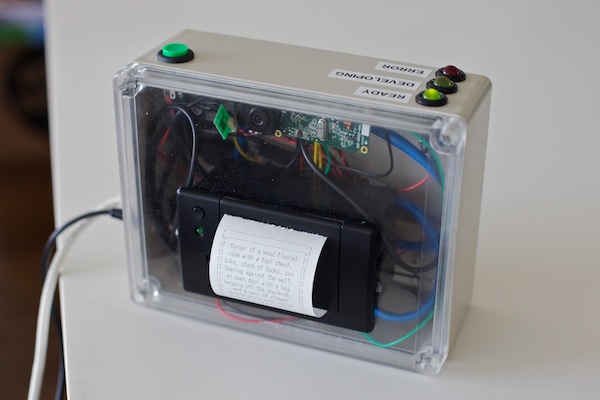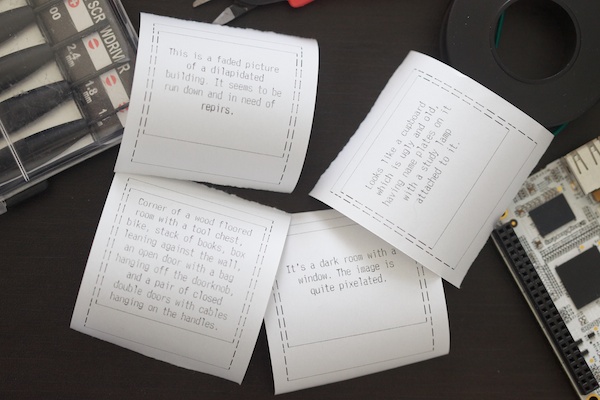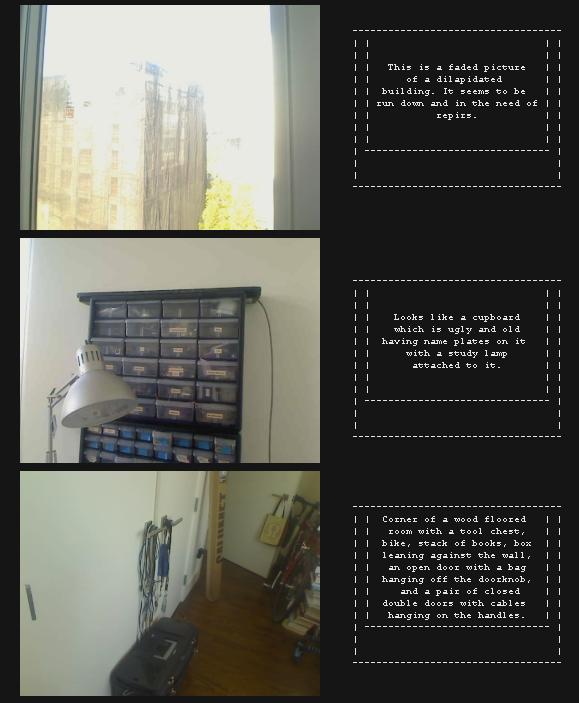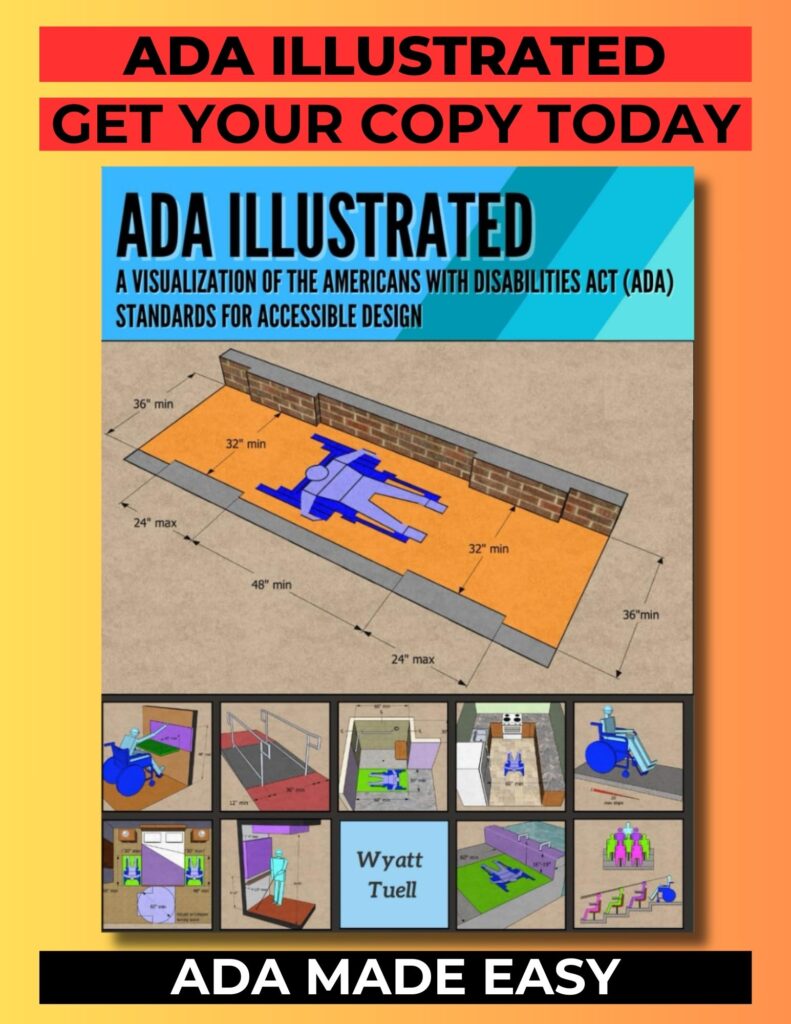Read Pictures with The Descriptive Camera

Many of you may be surprised to learn that people who are blind use cameras and like to take pictures. Maybe not so much for themselves but to share with friends and family. My friends who are blind have Facebook pages and share pictures all the time (soon they’ll be sharing baby pictures!). There is a certain amount of reliance on others with sight to confirm what’s on the picture etc. That process could possibly be streamlined by a camera that tells you what’s on the picture. This is being done as an experimental project by Matt Richardson. His Descriptive Camera is not specifically designed for people with blindness, but the possibility is there.
Many people with blindness watch descriptive movies, which are movies where the action is audibly described. The Descriptive Camera would work in the same basic way. Currently Richardson’s camera consists of a USB camera, shutter button, thermal printer, LED status lights, and an ethernet cable. Pictures are taken like a standard point and shoot camera. That picture is then sent to a service with a live person that types out what is in the picture. In approximately 3 -6 minutes the description is printed out from the thermal printer. The words used to describe the pictures are metadata. Which means the pictures are tagged with certain keywords. Pictures can then be sorted and searched for in this way. Here are a few of the descriptions that have been printed out:
It’s a dark room with a window. The image is quite pixelated.
This is a faded picture of a dilapidated building. It seems to be run down and in the need of repirs (sic).
Looks like a cupboard which is ugly and old having name plates on it with a study lamp attached to it.
Corner of a wood floored room with a tool chest, bike, stack of books, box leaning against the wall, an open door with a bag hanging off the doorknob, and a pair of closed double doors with cables hanging on the handles.

To be completely accessible for a person who is blind there would need to be a few changes. Of course the main change would be turning the printed descriptions into digital ones that can read back with text-to-speech software. This could be done on the camera itself, sent via text message, or email with the picture attached. A helpful additional service would be if the user could ask the description writer to answer a specific question about the picture. For example the user could be take a picture of a couch and ask what the color is.

Richardson is still working on his project and has immediate improvement plans. First being wire elimination so the camera is portable. Which means adding a battery and installing wireless internet access. Below is a video of him giving a presentation of his Descriptive Camera project. To see more of Matt Richardson’s work and resume, view his website at www.MattRichardson.com.
